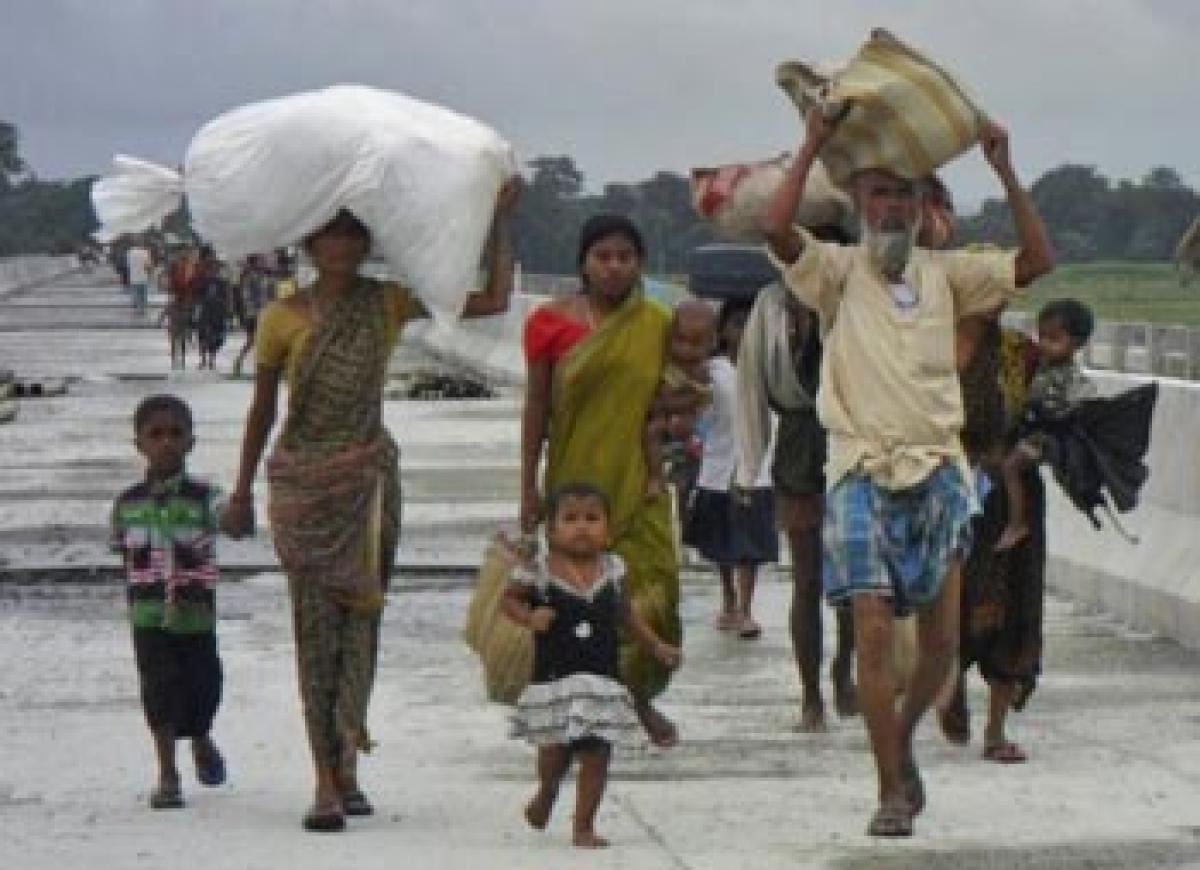Live
- Metal, PSU stocks lead market gains
- Congress ready to set 'dangerous precedent' by implementing Inheritance Tax: PM Modi
- Countdown starts for polling for 14 LS seats in K'taka, public campaigning to end today
- Where are the two crore jobs that were promised, asks Congress chief Kharge as Kerala prepares to vote
- Ericsson, IIT Kanpur's tech incubator F.I.R.S.T to drive financial solution innovations
- WhatsApp Update: Admins Can Soon Hide Specific Groups From Comunity List
- Massive Rally Held in Southern Constituency as Jana Sena, TDP and BJP Unite for Election Campaign
- Former MLA Gouru Charitha Reddy Holds Road Show and Meeting Program Ahead of General Elections
- YSR Congress Party MLA Candidate Conducts Election Campaign in Visakhapatnam
- Fan Support Grows for Panyam MLA Katasani Rambhupal Reddy in Election Campaign
Just In

Yet another scheme named “Shyama Prasad Mukherji Rurban Mission” was launched by the Prime Minister recently for developing initially 300 villages across the country as urban growth centres.
Yet another scheme named “Shyama Prasad Mukherji Rurban Mission” was launched by the Prime Minister recently for developing initially 300 villages across the country as urban growth centres.
An investment of over Rs 5,000 crore is suggested for this project, which aims at transforming rural areas as “economically, socially, and physically sustainable spaces”.
The scheme was announced in Budget 2015-16 with the object of providing “integrated project based infrastructure in rural areas”. Public-private partnership is envisaged in its operation. It was inaugurated from Chhattisgarh a State that badly needs this mission.
Rurban Mission aims at creating village clusters provided with urban facilities so as to put a break on migration from rural areas. It looks like rural counterpart of urban “smart city” project.
Indeed, smart cities without smart villages can only widen rural-urban differences. The proposed clusters will be of smart villages. First experimented in Gujarat from 2011, it is being extended to the entire country and is expected that it would also ease pressure on cities which are now unable to cope with unending streams of migrants from villages.
In a way, it is a version of PURA, the pet theme of Late President Abdul Kalam. And it is an improvement as a scheme of the Government with budgetary allocation unlike PURA that depended much on voluntary support.
The Mission has three main objectives, viz., improving life of people in rural clusters; bridging rural-urban divide; and reducing distress migration from rural to urban areas. Nearly half the rural population, according to 2011 census, live in 1.2 lakh villages with a population ranging from 2,000 to about 10,000.
The number of big villages, i.e. those with over 10,000 population, has been increasing due to internal migration. But , corresponding physical development is not taking place. Rural-urban divide today is not as sharp as it used to be.
The number of statutory towns (notified by State governments), census towns (identified by census), urban agglomerations (contiguous urban spread), outgrowth (viable units like village or hamlet), one million plus cities are all increasing in number.
Satellite towns situated at some distance from a city, but linked with it by transport facilities for daily commuting have come up. Suburban areas of metropolitan cities have acquired all the characteristics of cities retaining their own form of administration.
All these developments have similar impact of causing gradual disappearance of villages near big towns and cities in India. The number of people giving up farming as their main occupation has been declining from census to census.
Between 2001 and 2011, the decline is from 103 million to 98 million. Research studies also reveal the willingness of increasing number of people to give up farming as their main occupation.
Migration is aided by several schemes like Special Economic Zones, IT Corridors, industrial complexes, real estate business, slum clearance and projects like “shelter for all”, and so on. They result in chaotic migrations that upset urban life also.
Rurban Mission must have a strong component to help agriculture and industries also so that with extension of urban facilities, rural based occupations will go on without interruption.
The Mission should simultaneously benefit rural and urban areas and lead to over-all regional growth. The motto “strengthen rural areas, de-burden urban areas” to achieve area-wise balanced growth and development has to be scrupulously followed so that the Mission will not become a mere name change for “urban hinterland” or rural-urban fringe.

© 2024 Hyderabad Media House Limited/The Hans India. All rights reserved. Powered by hocalwire.com







